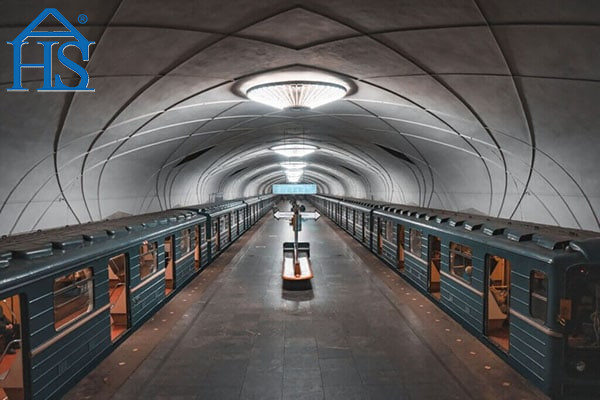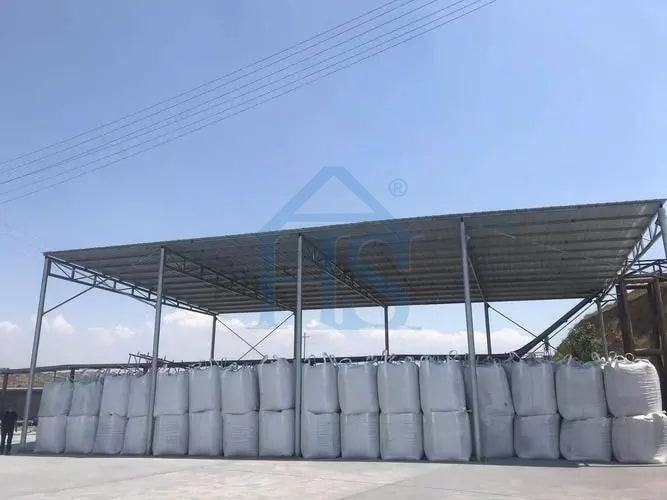It is observed that only the best high-temperature resistant materials are used as refractory materials. The refractory materials are made from a mixture of silicon, อลูมิเนียม, และแคลเซียม. คุณสมบัติการนำความร้อนต่ำช่วยป้องกันไม่ให้ความร้อนถูกถ่ายเทออกจากเตาเผา. สิ่งนี้มีความสำคัญเนื่องจากส่งผลให้ต้องใช้พลังงานน้อยลงในการรักษาอุณหภูมิที่ต้องการสำหรับเตาเผา.
พื้นฐานองค์ประกอบทางเคมีของพวกเขา, วัสดุทนไฟจะขยายตัวเมื่อสัมผัสกับความร้อน. แมกนีเซียมออกไซด์เป็นวัสดุที่ใช้กันมากที่สุดและมีค่าสัมประสิทธิ์การขยายตัวสูง. กระบวนการผลิตทั่วไปสำหรับวัสดุทนไฟเกี่ยวข้องกับขั้นตอนต่างๆ เช่น การบดและการเจียร, followed by forming, firing, and final processing.
The Best Refractory Material Uses for Silica Fume
Silica fume is a by-product of the manufacturing process of silicon. Elemental silicon is produced by heating quartz at extremely high temperatures, the SiO2 (ซิลิกอนไดออกไซด์) thus produced further oxidizes and condenses to give out silica fume. This article will discuss how refractory material can be made from silica fume.
Refractory materials are used to make metal-casting molds and foundry equipment for metal production. They are also used in high-temperature furnaces for making steel or other metals by melting the castings.
Manufacturers use this material mainly to produce ceramic products. Many types of refractory materials can be created using silica fume, including castable refractories, nonwoven fiber materials, and fluxes that can withstand high temperatures without breaking down over time.
Silica sand is widely used in the production of refractory castables thanks to its ability to provide better packing. นอกจากนี้ยังต้องการน้ำน้อยกว่าทรายในขณะที่รักษาลักษณะการไหลเดียวกัน, ทำให้มันสมบูรณ์แบบสำหรับการเผาที่อุณหภูมิต่ำ. Silica sand is also great for facilitating the formation of mullite, ซึ่งช่วยให้ castables ของคุณทนทานยิ่งขึ้น.
castables มีความแข็งแรงและหยุดก๊าซ, ตะกรัน, และโลหะผ่านมันไป. Castables Silica Fume นั้นแข็งแกร่งที่สุด, โดยเฉพาะอย่างยิ่งในอุณหภูมิสูง & ความหนาแน่นสูง. ยิ่งคุณใช้ซิลิกาควันในสูตรของคุณมากขึ้นเท่านั้น, ยิ่งดีสำหรับโครงการคัดเลือกนักแสดงของคุณ.
ซิลิกาฟูมคืออะไร?
ซิลิกาฟูม is essentially the by-product obtained from ferrosilicon alloys and silicon metal production processes. Silica fume is popular for its use in concrete. It’s not just ground-up glass – it has other minerals mixed into it as well.
Silica Fume is light and porous, so it’s easy to process with other materials. Silica fume can be used for insulation or as a filler in rubber products because it helps the material resist heat and moisture.
This versatility and ability to provide a more uniform product makes Silica Fume an ideal additive for manufacturing high-quality refractory castables. This is due to the fact that Silica Fume has a stabilizing effect on the pH, reduces impurities, and improves workability in the final product.
Why Use Silica Fume Instead of Other Refractories?
It is not uncommon for refractories to be used in industrial settings. อย่างไรก็ตาม, not all refractories are created equal. The most commonly used materials are silica sand, brick, ปูนซีเมนต์, and clay. อย่างไรก็ตาม, these materials can take up excessive space and produce harmful gases.
Silica fume is a type of industrial mineral that can be found in abundance – it is an offshoot of the production process for silicon metal. Because it takes up less space than other materials and its production process does not release harmful gases into the environment, silica fume has been becoming more popular as a choice for industrial minerals over time.
Modus Operandi for bonding
Silica fume reacts with water to form silanol groups (Si-OH) on the surface. These groups condense at 80°C to form siloxane bonds (Si−O−Si). This siloxane network that is formed under low temperature at room temperature starts to break down at 250°F.
นอกจากนี้, silica fume provides high strength under different temperatures. Silica fume helps increase the strength of castable products at low and high temperatures.
Silica fume is so special because it can actually react with Al2O3 at high temperatures to form mullite, thanks to its high activity. This improves the strength and stability of your ordinary refractory castables. Thanks to the combination of its design and materials, the product can have ab cold crushing strength that is more than 100 MPa after being fired at around 1000°C.
Silica Fume Uses in Refractory Materials
Silica Fume is a by-product of the production of Portland cement and has been used in refractory materials for centuries.
Silica fume has a number of applications:
– วัสดุทนไฟ: สัดส่วนที่เหมาะสมของซิลิกาฟูมช่วยให้เยื่อบุรังผึ้งทนต่ออุณหภูมิสูงถึง 2100 ° C โดยไม่บิดเบือนหรือหลอมละลาย. สิ่งนี้ทำให้เป็นรูปแบบที่พบบ่อยที่สุดสำหรับเตาอบและเตาเผา.
– ซิลิกาควันเป็นสารชนิดที่สามารถส่งผลกระทบโดยตรงต่อการไหลได้ง่ายเพียงใด. เนื้อหาของซิลิกายิ่งมีมากขึ้น, ยิ่งดีขึ้น. การใช้ซิลิกาฟูมเนื้อหา SiO2 ต่ำอาจทำให้ปริมาณน้ำสูงขึ้นใน castables.
– Structural Insulators: Silica fume particles can help with heat insulation, as it is thermally stable and doesn’t melt until 2100°C.
– เซรามิกส์: Silica fume also helps improve the properties of ceramic materials.
– Silica fume is a very reactive material because of its high surface free energy. สำหรับเหตุผลนี้, silica fume usually collides with other particles and agglomerates easily. In order to improve its reactivity, some types of undensified silica fume are often used as binders as they have a greater dispersion efficiency. Silica fume is an effective secondary reactant in the production of lower-strength, high-density pouring cement.
Effect of the presence of silica fume on castable containing magnesium oxide
The use of silica fume in magnesium oxide castables has been studied extensively. The potential benefits are reduced porosity, การซึมผ่านที่ลดลง, reduced gas leakage, reduced shrinkage, better strength at elevated temperatures, and improved thermal properties. This experiment aims to determine how the presence of silica fume affects the properties of castable containing magnesium oxide. A castable is a type of concrete that cures to produce no surface tension.
Silica Fume and Its Effect on Refractory Materials
Silica fume is a by-product of silicon dioxide, หรือที่เรียกว่าไมโครซิลิก้า. In the manufacturing process, sand is heated to 2,200 degrees Celsius in a furnace to produce silicon and silica fume.
This silica has been used in refractory materials because it has a high melting point and low thermal conductivity properties. Refractory materials are used in processes such as steelmaking and glass production for their resistance to heat and oxidation.
Silica fume is often used for this reason in the production of bricks and mortar for construction purposes.
The Pros and Cons of Silica Fume in Refractory Materials
Silica fume has been used as an additive in refractory materials for over a decade. It is still widely used today, but there are some arguments for the use of silica fume. Silica fume is cheaper than other alternatives, it reduces sulfur dioxide emissions and produces less smoke. อย่างไรก็ตาม, there are cons to using silica fume too. Silica fume can cause pollution when it is created at high temperatures, but this can be mitigated with the use of binders to create a more solid form of the material.
บทสรุป: Why Silica Fume is a Good Choice for Refractory Materials
Silica Fume is one of the most popular refractory materials for brick making. It is an important source of silicon dioxide, which forms strong bonds with calcium oxide and aluminum oxide in clay bricks. This makes it a perfect material for use in refractory materials. นอกจากนี้, it has excellent insulating properties that make it heat resistant and resistant to corrosion. Another key feature is its low density, which means it takes up less space than other refractory materials like finely ground coal or lime mortar. In addition to these benefits, Silica Fume also has a good thermal capacity and thermal conductivity because of the way that silicon dioxide conducts heat energy quickly from one place to another.
To sum it all, Silica Fume has numerous aspects that make it a perfect choice for refractory materials:
• This material is resistant to heat, fire, and shock.
• With a high heat capacity and low thermal conductivity, this material is the best choice for applications requiring resistance to high heat levels.
• The refractory material offers outstanding thermal stability. It does not crumble under thermal shock.
It is important to choose a trusted silica fume supplier, เช่น Henan Superior Abrasives Import & บริษัทส่งออก, จำกัด. เลือกซื้อผลิตภัณฑ์ซิลิกาฟูมคุณภาพสูงของเราวันนี้.





